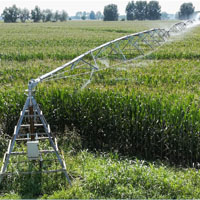Evaluation of ammonia emissions from filtration of digestate used for fertigation

Published: 30 September 2021
Abstract Views: 1231
PDF: 549
HTML: 33
HTML: 33
Publisher's note
All claims expressed in this article are solely those of the authors and do not necessarily represent those of their affiliated organizations, or those of the publisher, the editors and the reviewers. Any product that may be evaluated in this article or claim that may be made by its manufacturer is not guaranteed or endorsed by the publisher.
All claims expressed in this article are solely those of the authors and do not necessarily represent those of their affiliated organizations, or those of the publisher, the editors and the reviewers. Any product that may be evaluated in this article or claim that may be made by its manufacturer is not guaranteed or endorsed by the publisher.
Similar Articles
- Andrea Peruzzi, Luisa Martelloni, Christian Frasconi, Marco Fontanelli, Michel Pirchio, Michele Raffaelli, Machines for non-chemical intra-row weed control in narrow and wide-row crops: a review , Journal of Agricultural Engineering: Vol. 48 No. 2 (2017)
- Frank Agyen Dwomoh, Xingye Zhu, Alexander Fordjour, Junping Liu, Shouqi Yuan, Hong Li, Structural design and performance characteristics of the fluidic sprinkler application technology for saving irrigation water: a review , Journal of Agricultural Engineering: Vol. 54 No. 2 (2023)
- Giovanni Molari, Michele Mattetti, Matthew Walker, Field performance of an agricultural tractor fitted with rubber tracks on a low trafficable soil , Journal of Agricultural Engineering: Vol. 46 No. 4 (2015)
- Remo Alessio Malagnino, Performance analysis of photovoltaic plants installed in dairy cattle farms , Journal of Agricultural Engineering: Vol. 46 No. 2 (2015)
- Tommaso Baggio, Francesco Bettella, Lucia Bortolini, Vincenzo d'Agostino, Hydrologic performance assessment of nature-based solutions: a case study in North-eastern Italy , Journal of Agricultural Engineering: Vol. 54 No. 2 (2023)
- Pietro Catania, Filippa Bono, Claudio De Pasquale, Mariangela Vallone, Closed tank pneumatic press application to improve Sauvignon Blanc wine quality and nutraceutical properties , Journal of Agricultural Engineering: Vol. 50 No. 4 (2019)
- Alvaro Marucci, Danilo Monarca, Massimo Cecchini, Andrea Colantoni, Andrea Cappuccini, Analysis of internal shading degree to a prototype of dynamics photovoltaic greenhouse through simulation software , Journal of Agricultural Engineering: Vol. 46 No. 4 (2015)
- Ernest Ekow Abano, Hai Le Ma, Wenjuan Qu, Thin-layer catalytic far-infrared radiation drying and flavour of tomato slices , Journal of Agricultural Engineering: Vol. 45 No. 1 (2014)
- Simone Pascuzzi, Giovanni Russo, Giacomo Scarascia-Mugnozza, Giuseppe Verdiani, Sanitary risk analysis for farm workers exposed to environmental pollutants , Journal of Agricultural Engineering: Vol. 43 No. 4 (2012)
- Andrea Rosario Proto, Giuseppe Zimbalatti, Martino Negri, THE MEASUREMENT AND DISTRIBUTION OF WOOD DUST , Journal of Agricultural Engineering: Vol. 41 No. 1 (2010)
<< < 8 9 10 11 12 13 14 15 16 17 > >>
You may also start an advanced similarity search for this article.

 https://doi.org/10.4081/jae.2021.1187
https://doi.org/10.4081/jae.2021.1187







